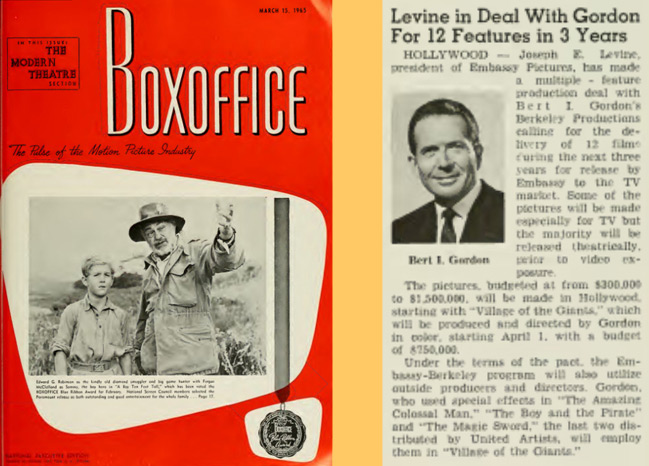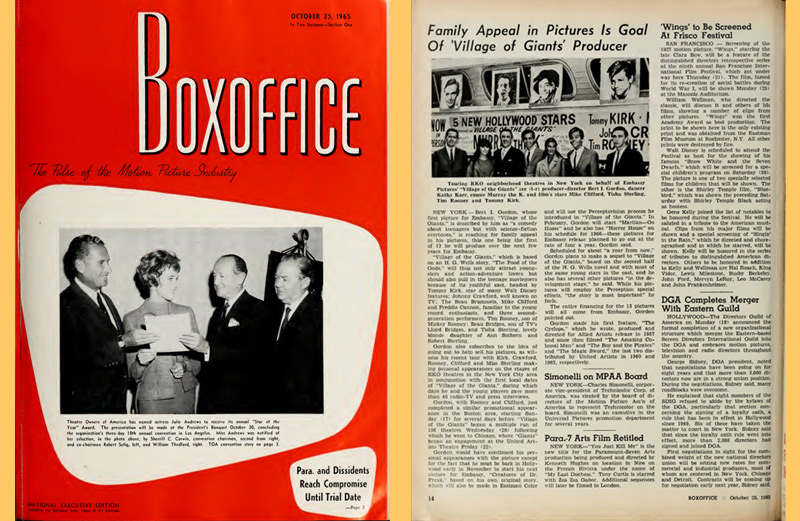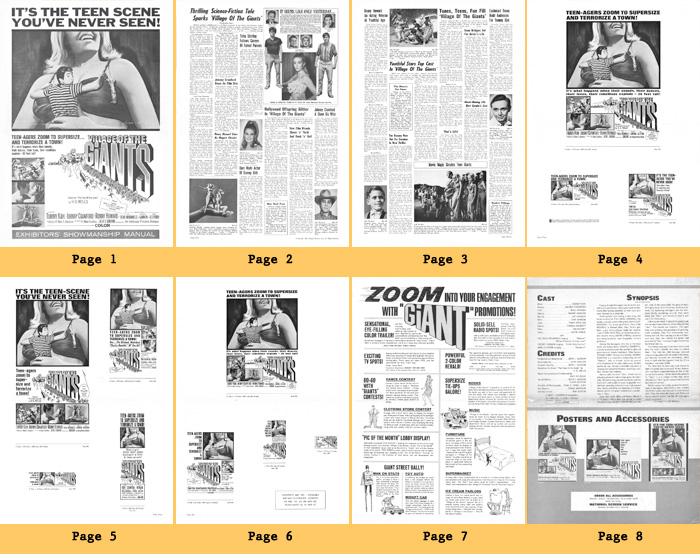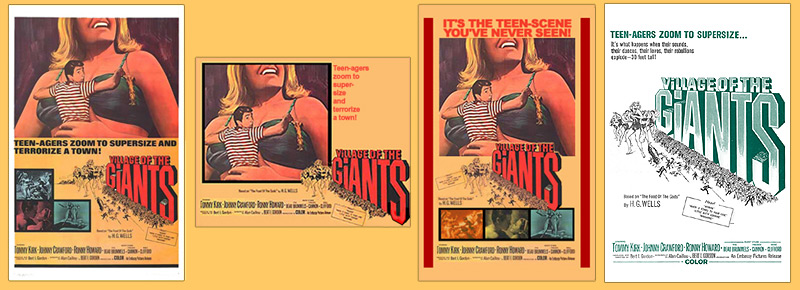
Lobby Cards featured color images of the film and were usually displayed in theater lobbies. Above are two sets of 8 lobby cards. The top-most cards are from the U.S. release. The still images were actually re-colored keybook stills. Of note is that some of the colors do not match some of the scenes in the film. For example: the teens dancing in the rain and mud are much more colorful than in the same scene in the film.
Underneath is an 8-card set of the film as it was advertised in Mexico, with the title El Pueblo De Los Gigantes., which translates to The Town of the Giants. These cards differ in regards to their their format, and also give the film stills just a small image in black-and-white.
|
Magazine Promotions

Click on each page to open a larger image in a new browser window.
Finding magazine articles involving Village of the Giants is very difficult. But it's also difficult to find any kind of behind-the-scenes articles. Thankfully, the studio at the time allowed Bert I Gordon to talk about his filming technique with American Cinematographer, who published Bert's 4-page article in it's September 1965 issue.
The article is a wonderful look into the 'process shots' that Bert used, as well as his use of the wide-angle lens and angles to sell the illusion of normal-sized teenagers being over 30 feet tall. There is even a great article telling just how he created the duck sequence with them dancing with the other teens at the Whiskey-a-Go-Go.
Above you can click on any one of the small pages, and it will open a full-size image that you can read. The article even contains some small but interesting behind-the-scenes photos of the 'mud-dancing' sequence, showing more of the location, as well as the lighting and camera set-ups.
|

Searching online, it's amazing what one can find on obscure information. My search across the internet returned a site called issuu.com, that archives and catalogues old magazines. One that turned up in my search was titled Boxoffice, that concerns motion picture distribution.
This article dating back to March 15, 1965, gives information about Bert I Gordon's announcement to make Village of the Giants for the Embassy Pictures studio. Part of a 13-picture deal, Village was the first of the deals, with the article giving never-before-heard-of information, such as the start date of the picture to be on April 1, 1965, with a production budget of $750,000.
|










